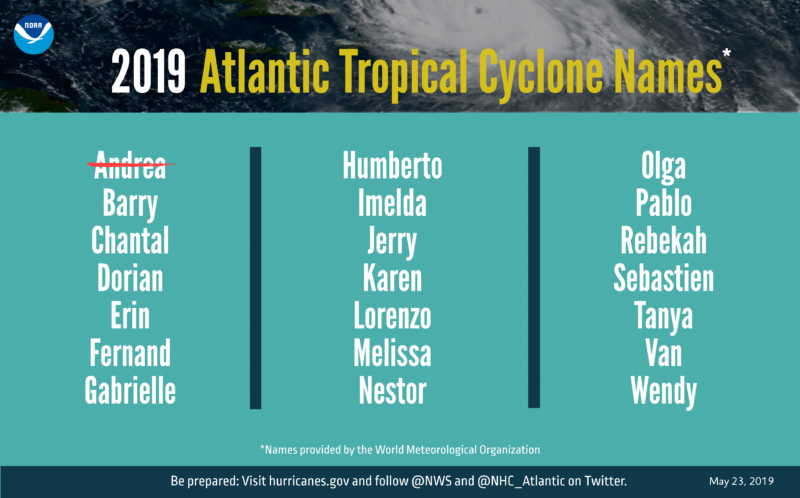The 2019 Hurricane Season is underway, and the NOAA says there will be a 40% chance of a near normal Atlantic Hurricane season. 30% of a calmer season and 30% that it will be worse than usual.
The season officially started June 1 and ends November 30.
For 2019, NOAA predicts a likely range of 9 to 15 named storms (winds of 39 mph or higher), of which 4 to 8 could become hurricanes (winds of 74 mph or higher), including 2 to 4 major hurricanes (category 3, 4 or 5; with winds of 111 mph or higher). NOAA provides these ranges with a 70% confidence. An average hurricane season produces 12 named storms, of which 6 become hurricanes, including 3 major hurricanes.
This outlook reflects competing climate factors. The ongoing El Nino is expected to persist and suppress the intensity of the hurricane season. Countering El Nino is the expected combination of warmer-than-average sea-surface temperatures in the tropical Atlantic Ocean and Caribbean Sea, and an enhanced west African monsoon, both of which favor increased hurricane activity.
NOAA’s Climate Prediction Center will update the 2019 Atlantic seasonal outlook in August just prior to the historical peak of the season.
Be Hurricane Ready
- Plan what to do in case of an evacuation; practice the evacuation routes and know your closest shelters.
- Have a family emergency kit with essential supplies, such as water and food for at least 10 days for each member of the family; make sure it’s easy to find.
- Have a first aid kit with bandages, sterile gauze, thermometer, prescriptions and over-the-counter medications.
- Understand options to purify drinking water.
- Know how to shut off utilities.Know whether your property is flood-prone.
- Identify levees and dams near the area and determine if they are a hazard.
- Prepare a safe room, such as an interior bedroom or bathroom, and put an emergency kit there.
- Buy permanent shutters or plywood panels to protect windows and sliding doors.
- If your house is made of wood, check its structural connections. The roof, walls, floor and foundations must be joined by metal anchors. If you can’t use anchors, then install straps, tensioning cables or additional clips to securely fasten your roof to the frame.
- If you have to evacuate, lock all doors and windows and don’t leave house keys in obvious places such as the mailbox.





